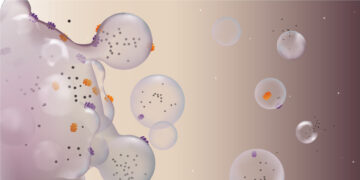
10 Tips for Optimizing High-Throughput Flow Cytometry Assays
Flow cytometry can be labor intensive, and efforts to increase throughput can lead to reduced data quality or even instrument reliability issues such as blockages. While some instruments are more …

Optimize Your Assays for High-Throughput Flow Cytometry
Flow cytometry is a powerful technique with many applications in both academia and drug discovery. It can facilitate complex immunophenotyping experiments, making it an indispensable tool for understanding biological systems. …

Compliance and Regulations for Flow Cytometry in Drug Discovery: Webinar Series
In this webinar series, learn about 21 CFR Part 11 regulations for flow cytometry in drug discovery. Learn what software and instruments can help you comply.

Vive la Différence: The Beauty of Diversity in Life, Life Science, and Flow Cytometry
The differences between us are what makes life interesting, and diversity in a group that shares a common goal can lead to many benefits. Here we examine the similarities and differences between researchers using flow cytometry for academic research and those using it for drug discovery. We outline the challenges they face and learn that they share a common goal as well as a common solution.

Cytometry in Drug Discovery: An Introduction to Regulation, Standardization, and Productivity
Many researchers learn flow cytometry in academia, but find new challenges in the commercial sector. In this webinar, learn about regulatory issues and more.

Faster PCR and Flow Cytometry Highlighted in Annual Lab Automation Roundup
The annual international Society for Laboratory Automation and Screening (SLAS) conference is the highlight of the year for scientists in academia, industry, and government focused on leveraging the power of automation to achieve scientific breakthroughs. Here are some highlights of this year’s conference and how Bio-Rad contributed to it.

Flow Cytometry and the Law of Bottlenecks
Manufacturing and high-throughput screening may seem to have very little in common, but they are related at a fundamental level. Both seek to transform a raw material into a finished product, and both struggle with constraints, or bottlenecks, that reduce efficiency. How can we apply the revolutionary 20th century management principles of continuous improvement to 21st century flow cytometry?

Rising from the Ashes: The History of the 488 nm Laser
Despite the pivotal role of the 488 nm (blue) laser in the rise in popularity of flow cytometry, it experienced somewhat of a fall from grace following the shift to higher usage of the 561 nm (yellow) laser. However, with the advancement of flow cytometry leading to the use of more complex multicolor panels and ever-increasing fluorophore numbers per experiment, the blue laser is starting to make a comeback. Discover how StarBright Blue Dyes can help you make the most out of your 488 nm laser.

Nature’s Lipid Nanoparticles: Challenges and Opportunities in Isolation and Analysis of Extracellular Vesicles
In nature, mammalian extracellular vesicles (EVs) are vital for intercellular communication, immune responses, and cell removal. EVs also hold promise in diagnostics, therapeutics, and vaccine delivery due to their abundance and natural role as carriers. Explore how overcoming challenges in EV purification and precise RNA analysis methods can help unlock their potential applications.

StarBright Dyes for Flow Cytometry
Watch this video to learn about the many benefits of StarBright Dyes — our proprietary fluorescent nanoparticles — and see how they can help you build bigger, better flow cytometry panels with ease. StarBright Dyes have been designed to be stable, with superior brightness, narrow excitation and emission characteristics, and the flexibility to be included in new and existing experiments. They offer improved resolution of specific cell populations and minimized spillover and spreading.
